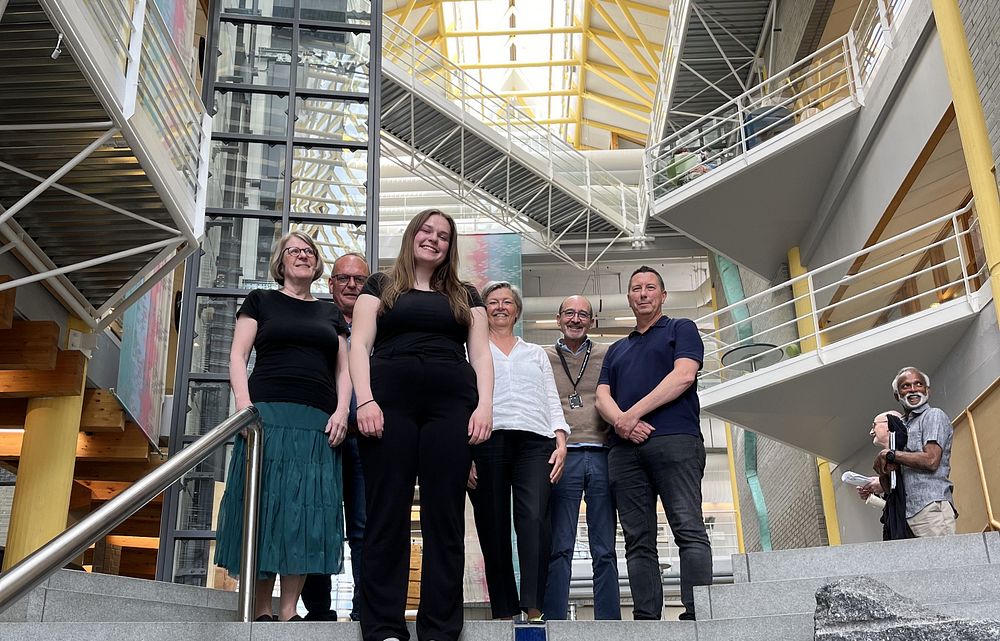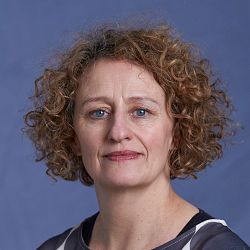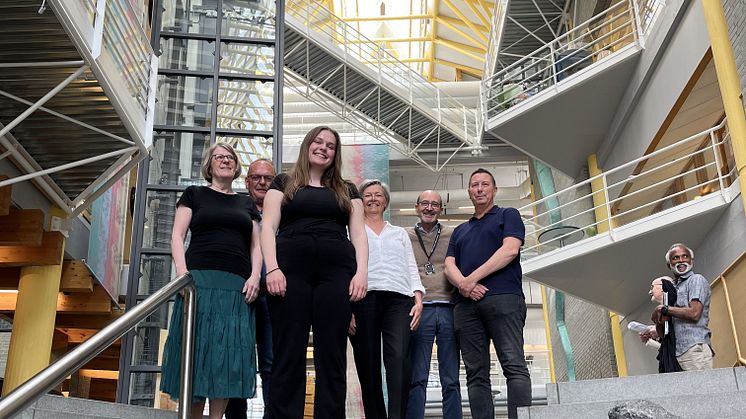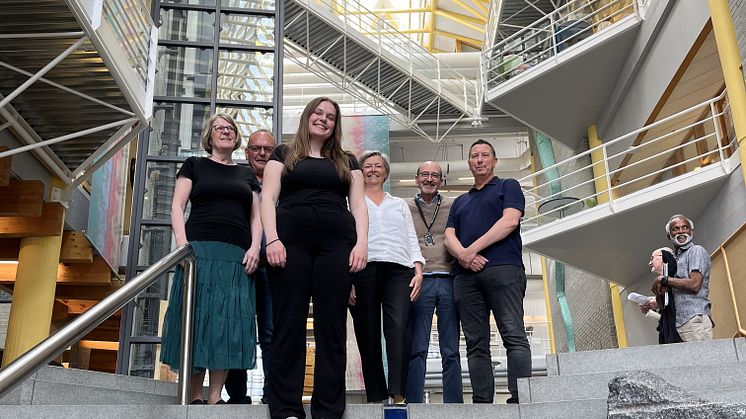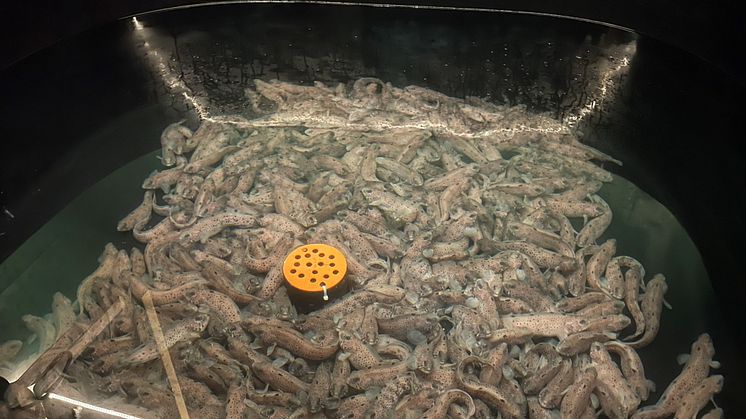
Nyhet -
A new feed increases survival rates for spotted wolffish in aquaculture
The spotted wolffish (Anarhichas minor, Olafsen 1772) has been considered as a highly attractive candidate for aquaculture since the 1990s. Low survival throughout the earliest life stages is, however, restraining the industry from reaching stable commercial levels. Broodstock diet is identified as a key factor for gamete quality. No species-specific broodstock diet has yet been developed for the spotted wolffish.
In a master project, by Terese Vollstad-Giæver at Akvaplan-niva, a low-fat diet (LFD) with highly digestible protein sources was formulated to investigate the impact on broodstock growth and fecundity, egg, sperm, and larval quality, using a standard high fat marine fish diet (HFD) as a control treatment. A pre-experimental feeding period of 2 years prior to spawning was carried out.
Mean weight and condition factor was significantly reduced in fish receiving the LFD treatment. Total fecundity and egg size did not vary between treatments, but there was a trend for females in the LFD to produce lower amounts of bigger eggs. Fertilization rates were high in both groups and did not differ significantly. Sperm quality determinants did not differ significantly between treatments, except seminal fluid pH (lower in sperm samples from the LFD group), and pH was shown to be positively correlated to sperm curvilinear velocity (VCL).
Eggs from the LFD group displayed significantly higher survival from incubation to one week prior to hatching. Fatty acid profiles of unfertilized eggs differed significantly between groups, and egg survival was positively correlated to the essential fatty acids 20:5 n-3 eicosatetraenoic acid (EPA), 20:4 n-6 arachidonic acid (AA), and 22:6 n-3 docosahexaenoic acid (DHA), in addition to omega-3 fatty acids, which were all significantly higher in eggs from the LFD group. Negative correlations between egg survival and the EPA:AA ratio and 18:9 n-1 (oleic acid) was detected. Hatching rates, deformity rates, larval survival from day 0-50 post hatch, length at day 0 and condition factor did not differ significantly between groups, but there was a tendency of higher survival and bigger larvae size in larvae from the LFD group.
